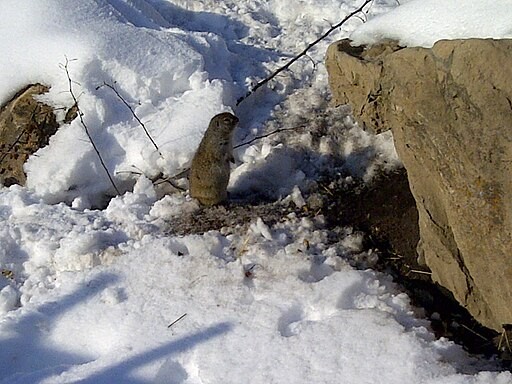Surviving the harsh weather and food shortages during winter can be challenging, especially for wild animals. Members of the animal kingdom have adapted in many ways, including hibernation, a remarkable adaptation characterized by a state of deep sleep.

(Photo: Wikimedia Commons/ dotLinda)
During hibernation, animals slow down their metabolism, conserve energy, and endure long periods without food. While many creatures hibernate, some species have their winter slumber to the extreme, enduring long periods of inactivity. In this article, we'll explore five species that boast some of the longest hibernation periods in the animal kingdom.
1. Eastern Box Turtle (Terrapene carolina carolina)
Reptiles are not usually associated with hibernation, but some of them, like the Eastern Box Turtle found in the eastern US, are known to enter a state of dormancy during winter. This turtle species either dig burrows under the soil and leaves or finds natural shelters to escape the cold sometime in October. Then, they usually emerge in April or early May.
Some Eastern box turtles can hibernate for up to five months. During this period, they rely on stored energy reserves to sustain their reduced metabolic activities.
2. Little Brown Bat (Myotis lucifugus)
Bats are known for their unique hibernation strategy, with the Little Brown Bat as a prime example. These animals can typically hibernate throughout North America for several months, sometimes entering a state of torpor for up to six months.
They seek out cool, dark places like caves or abandoned mines to endure the harsh winter temperatures. While hibernating, their metabolic rate drastically decreases, allowing them to survive on stored fat.
READ ALSO: Yellow-Bellied Marmots Spend 8 Months in Hibernation to Delay Aging Process
3. European Hedgehog (Erinaceus europaeus)
The European Hedgehog is another champion of hibernation. They can hibernate for up to six months, usually from late autumn to early spring. During this period, their body temperature significantly drops. Then, they enter a state of torpor while relying on stored fat reserves.
4. Wood Frog (Lithobates sylvaticus)
The Wood Frog has developed a different strategy to survive freezing temperatures during hibernation. As winter approaches, these animals enter a state of suspended animation, allowing them to form ice within their bodies without getting harmed. This ability gives them the reputation of being "frozen frogs."
Instead of burrowing deep underground or seeking out the warmth of a mountain rock crevice, the Wood Frogs hibernate close to the surface of the soil, staying there for up to seven months. They hibernate by taking shelter in the leafy litter on the forest floor. The leaves and overlying snow give the frogs some insulation from extreme cold.
When the warmer spring temperatures come, they are prompted to thaw and resume their normal activities. This unique ability makes the Wood Frog one of the most resilient hibernators in the animal kingdom.
5. Arctic Ground Squirrel (Urocitellus parryii)
Native to North America's Arctic and subarctic regions, the Arctic Ground Squirrel is a master of long-term hibernation. These tiny rodents can hibernate for up to eight months each year. They survive the extreme cold of the Arctic region by entering a state of torpor in burrows and reducing their body temperature to just above freezing. During this slumber period, their heart rate drops from 300 beats per minute to as low as five beats per minute.
RELATED ARTICLE: Lemurs' Hibernation May Be the Answer To Cryogenic Sleep For Space Travel
Check out more news and information on Hibernation in Science Times.














